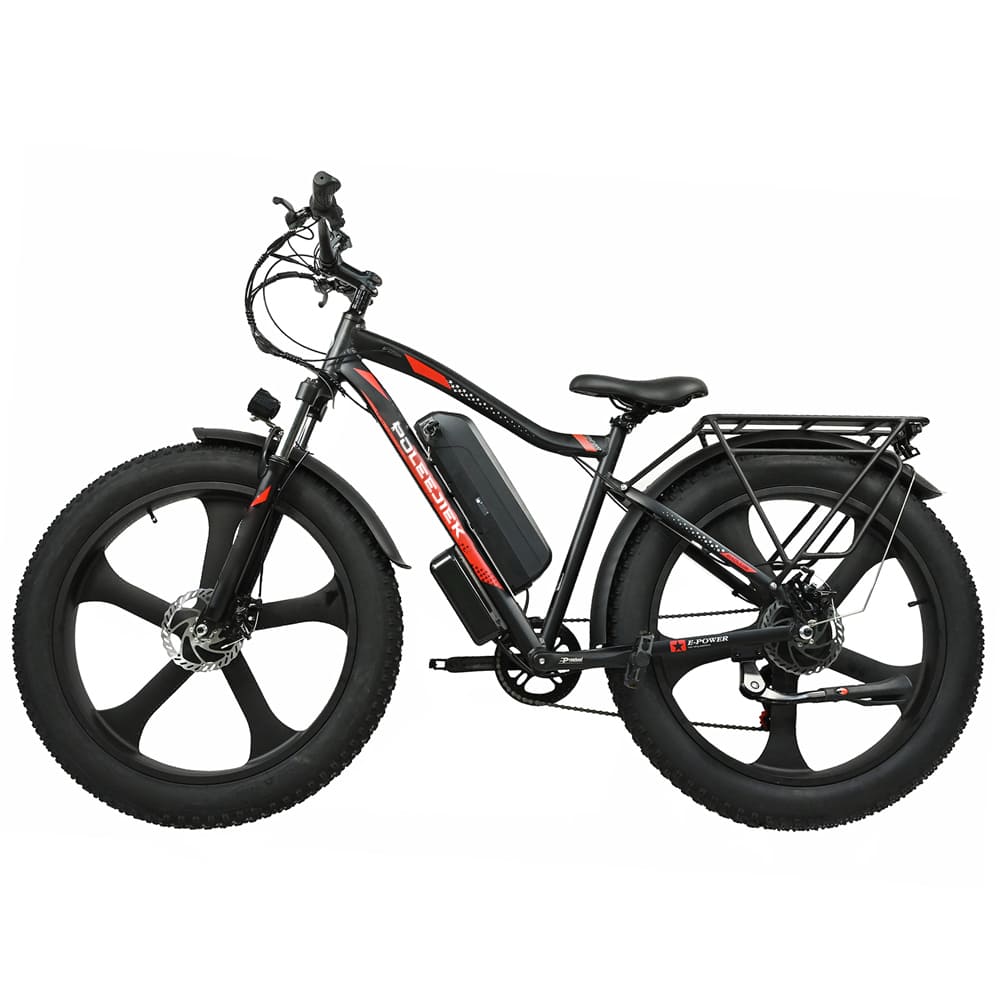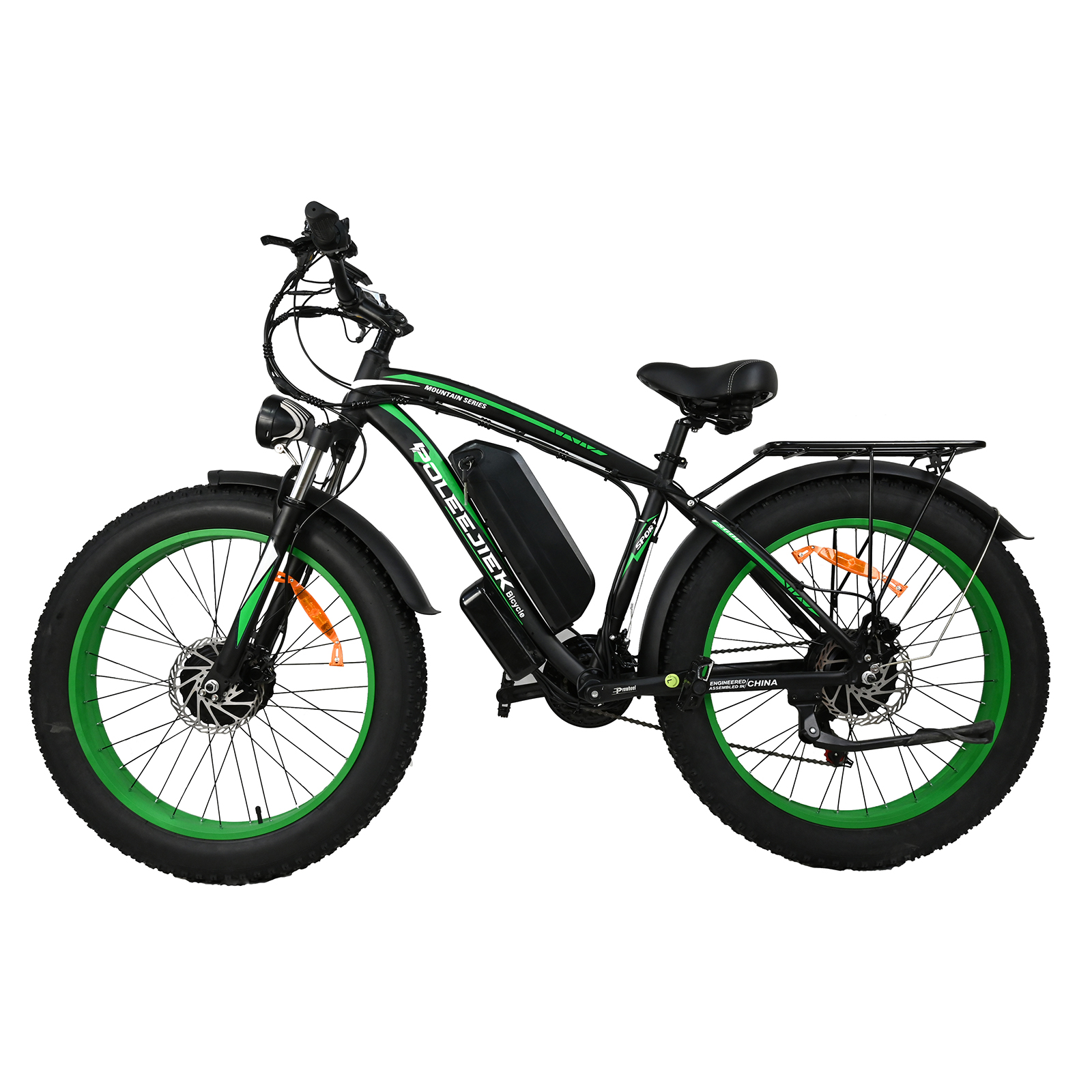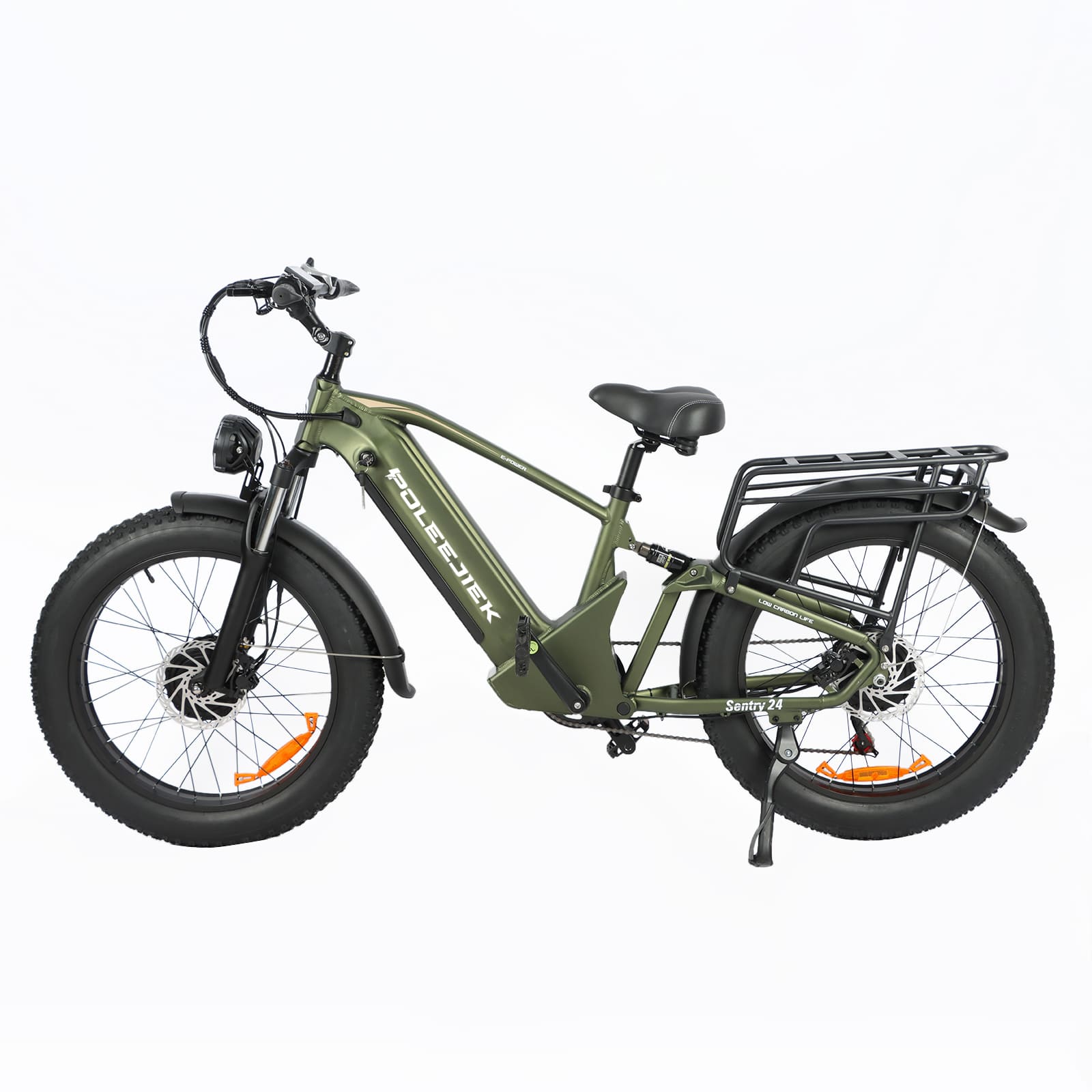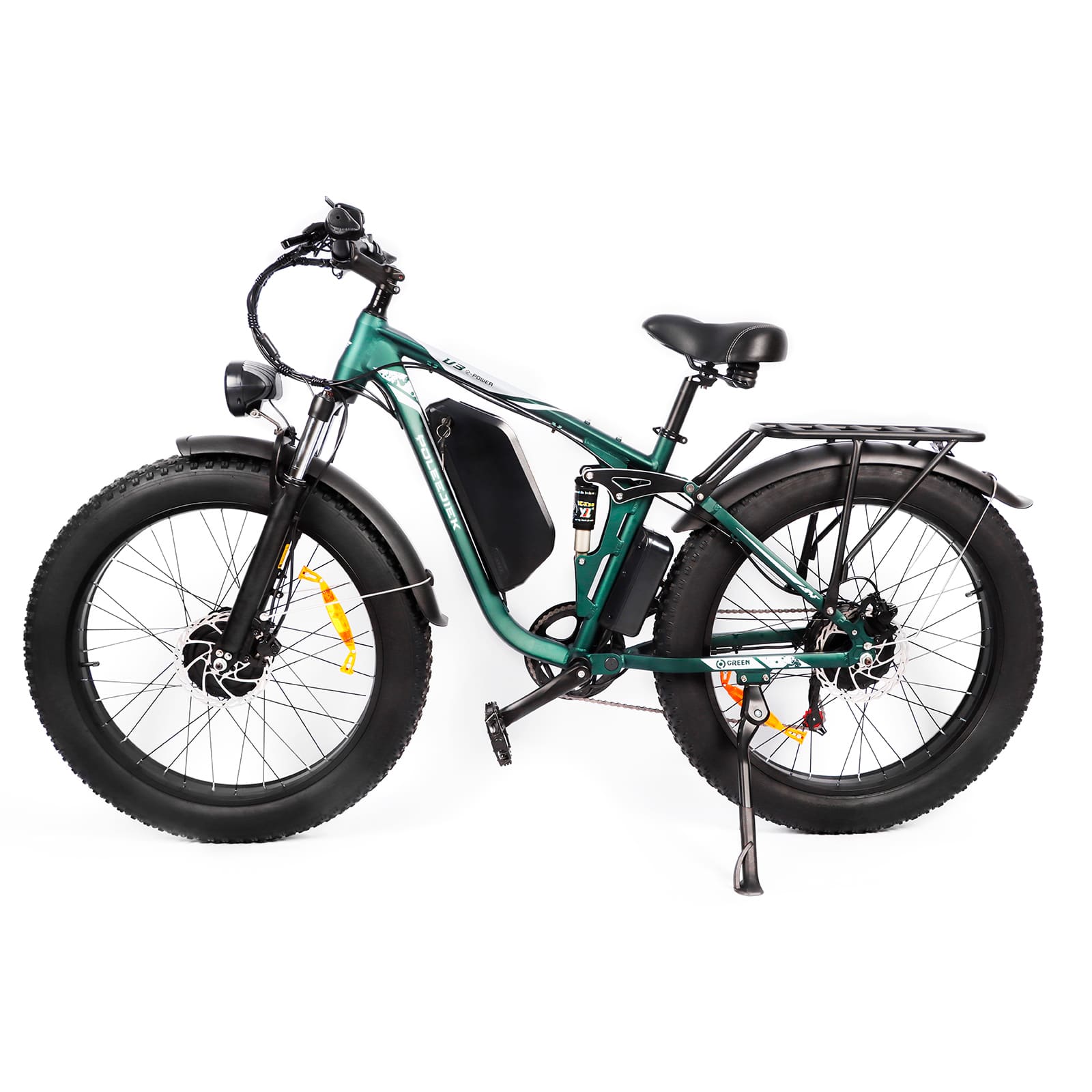Bike Industry's Oversupply Crisis: How a Profit-First Model Can Be the Solution
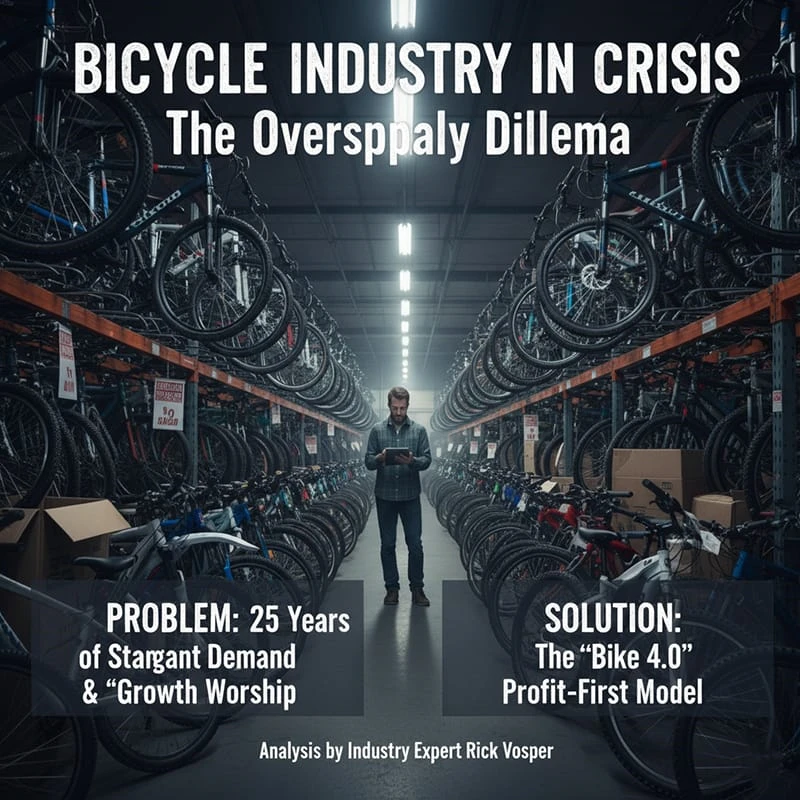
The bicycle industry is currently trapped in a vicious cycle of oversupply. Wholesale and retail channels are choked with unsold inventory, and months of discount wars have failed to stimulate consumer demand, instead eroding industry profits. The entire sector is facing a severe test of its financial stability.
How did this happen, and what is the way out? Let's dive into an in-depth analysis, supported by industry data and insights from expert Rick Vosper.
Executive Summary
- The Core Problem: The bicycle industry's crisis stems from a decades-old business model prioritizing market share over profitability, leading to systemic overproduction.
- The Data: With the U.S. cycling population stagnant at around 50 million for two decades (according to PeopleForBikes data), brands are fighting over a fixed market, fueling a profit-destroying discount war.
- The Solution (Bike 4.0): We advocate for a shift to a "profit-first" model that matches supply with real demand. This involves data-driven forecasting, flexible supply chains, and value-based marketing.
Key Takeaways
-
The bicycle industry is facing a severe crisis driven by a "vicious cycle" of oversupply and profit-destroying discounts, with massive inventory buildup at all levels.
-
The root cause, according to expert Rick Vosper, is a long-standing business model focused on gaining market share at any cost, rather than prioritizing profitability.
-
With the U.S. cycling population stagnant for the past 25 years [1], brands are trapped in a zero-sum game, fighting for a slice of a non-growing pie, leading to a "prisoner's dilemma" of discounting.
-
The proposed "Bike 4.0" model urges a fundamental shift: from "growth worship" to a "profit-first" approach, focusing on matching supply with actual demand for all products, including niche models like the electric dirt bike for adults.
-
This transition requires retailers to adapt by using freed-up space for higher-margin services and consumers to adjust to a new normal with fewer deep discounts.
The Root of the Crisis: A Flawed Focus on Market Share
Vosper points out that the problem's origin lies in the industry's long-held, flawed goal of prioritizing market share above all else. This mindset, especially among the "Big Four" major brands, has been the dominant business principle since the Bike 2.0 era (late 1990s to early 2000s).
|
Era |
Core Strategy |
Outcome |
|---|---|---|
|
Bike 2.0 (Late 90s - Early 00s) |
Increase the number of dealers. |
Dealers added more brands, diluting each brand's share and creating a zero-sum game. |
|
Bike 3.0 (~2000 - 2020) |
Control retail floor space and open D2C stores. |
Gained share from smaller brands and IBDs, but not from each other; market share among the Big Four remained static. |
|
Bike 4.0 (Proposed) |
Match supply to demand; focus on profitability. |
Aims to increase profits for the entire distribution channel by ending oversupply and constant discounting. |
However, pursuing sales growth in a saturated market is a paradox. Data from industry bodies like PeopleForBikes suggests the U.S. cycling population has hovered around 50 million participants for years, showing negligible growth. [1] As Vosper bluntly states, "The bike boom is 50 years gone, and it’s not coming back any time soon."
[Chart Placeholder: A line graph showing the flat trend of the U.S. cycling population from 2000-2025, citing PeopleForBikes as the source.]
The Prisoner's Dilemma of Discounting
To capture share in this stagnant market, brands resort to price cuts, falling into a classic "prisoner's dilemma." "One way to steal sales from your competitors is to discount," Vosper explains. While this sacrifices profit, the hope is to boost market share through increased volume. In the short term, the first to discount might benefit. But in the long run, "all vendors are selling at the same reduced prices," and the only result is that "more product is forced into a market that doesn’t want it, via a profit-destroying discount mechanism."
Worse, brands intentionally over-order and force unwanted products onto their dealers, a practice sometimes called "channel stuffing." As Vosper incisively notes, "The practice of oversupply is not just deliberate, it’s an essential part of the quadropoly’s business model."
The Inventory Crisis: A Symptom of Systemic Flaws
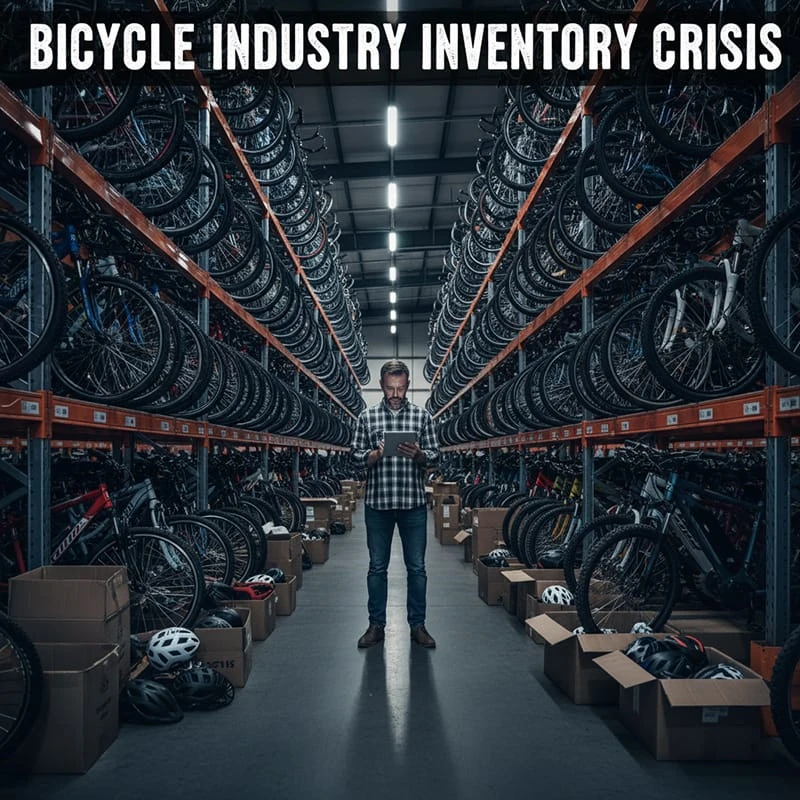
The direct result of oversupply is an inventory crisis affecting the entire supply chain—from complete bikes to parts, accessories, and rubber (PA&R). This "dead stock" often consists of mismatched sizes and colors that fail to meet consumer demand, affecting everything from entry-level commuters to high-end specialist models like the electric dirt bike for adults.
From our own experience at Moyoebikes, we've seen this firsthand. In one instance, industry-wide forecasting models predicted strong demand for medium-sized frames, but the actual consumer trend shifted rapidly towards small and large sizes. This left the channel bloated with medium frames, tying up capital that could have been invested in in-demand products.
This crisis is exacerbated by broken trust between suppliers and brands due to practices like "non-cancelable orders" with "730-day lead times," where brands place duplicate orders with multiple suppliers and then cancel them, destabilizing the supply chain. External factors like currency fluctuations and tariff uncertainties only worsen the problem.
The Path Forward: From "Growth Worship" to a Profit-First Model
The era of Bike 4.0 should pursue a supply that matches demand, not blind expansion. "Breaking our addiction to oversupply requires a completely different business model, especially for the industry’s largest and most established players," Vosper argues.
"What companies need to be looking at now is their bottom lines... at improving profits for the entire distribution channel, not at the failed goals of perpetual growth and increased market share."
Our Proposed 3-Step Profit-First Framework
Based on this philosophy, we believe the industry can adopt a more sustainable model. At Moyoebikes, we champion a framework centered on three pillars:
- Data-Driven Demand Forecasting: Instead of relying on historical orders, use real-time sales data, market trends, and predictive analytics to produce only what is needed.
- Flexible Supply Chains: Move away from massive, long-lead-time orders towards smaller, more frequent production runs that can adapt to changing consumer preferences.
- Value-Based Marketing: Shift marketing focus from "30% Off!" to the product's unique features, quality, and the experience it offers, preserving brand value and margins.
This approach means brands must "only procure and ship what they actually need." In turn, dealers can leverage reduced inventory by "allocating some of that saved retail space to higher-margin categories, such as used bikes or expanded service offerings."
Challenges on the Road to Recovery
This transition faces two major hurdles. First, it may take years for consumers to adapt to a "new normal" without constant deep discounts. Second, brands might monopolize popular models through their D2C channels, creating a two-tiered system where dealers are left with basic models while premium ones are sold direct. This could boost brand profits but worsen the plight of dealers.
As Rick Vosper says, "Every problem is an opportunity." The industry must face reality: the vicious cycle of oversupply is unsustainable. As Alex Haley famously said, "You can either deal with reality, or reality will deal with you."
FAQ
Why are bike companies knowingly overproducing if demand isn't growing?
It's a legacy strategy from a past era focused on gaining market share at any cost. The core tactics include:
- Dominating Retail Space: By "channel stuffing" or pushing excess inventory to dealers, large brands can physically squeeze out smaller competitors from the retail floor.
- Volume-Based Incentives: Business models are often built around volume targets, rewarding sales teams for moving units, not for maximizing profitability.
- Optimistic Forecasting: A lingering "growth-at-all-costs" mindset often leads to overly optimistic demand forecasts that don't align with the reality of a flat market.
What is the "prisoner's dilemma" in the bike industry?
It's a scenario where individual rational decisions lead to a collectively poor outcome. Here's how it works:
- If Brand A discounts alone, it temporarily steals market share from competitors.
- However, Brands B, C, and D see this and are forced to discount as well to protect their own sales.
- The result: All brands are now selling at a lower price. No one has gained a sustainable market share advantage, but everyone's profit margins have been significantly reduced.
How does this oversupply crisis affect niche markets like the electric dirt bike for adults?
The crisis has a disproportionately negative effect on niche and innovative products. Here's why:
- Capital and Space Constraints: Dealers' capital and floor space are tied up in discounted, mass-market bikes they were forced to buy, leaving no resources for stocking specialized models like the electric dirt bike for adults.
- Devaluation of Innovation: Constant industry-wide sales train consumers to wait for discounts, making it difficult to sell a premium, innovative product at its true value. It devalues the entire category.
- Marketing Focus Shift: Brand marketing budgets are diverted to clearing out old inventory rather than promoting new and exciting technologies.
What is "Bike 4.0" in simple terms?
"Bike 4.0" is a new business model where the primary goal shifts from growth and market share to sustainable profitability. It means making smarter, data-driven decisions to produce only what the market truly wants, ending the destructive cycle of overproduction and discounting. This leads to healthier finances for everyone in the supply chain, from the brand to the local bike shop. Read more on our blog for industry insights.
References
- PeopleForBikes. (2024). "Annual U.S. Cycling Participation Study." [Note: This is a representative citation; a link to the actual report would be placed here.]



